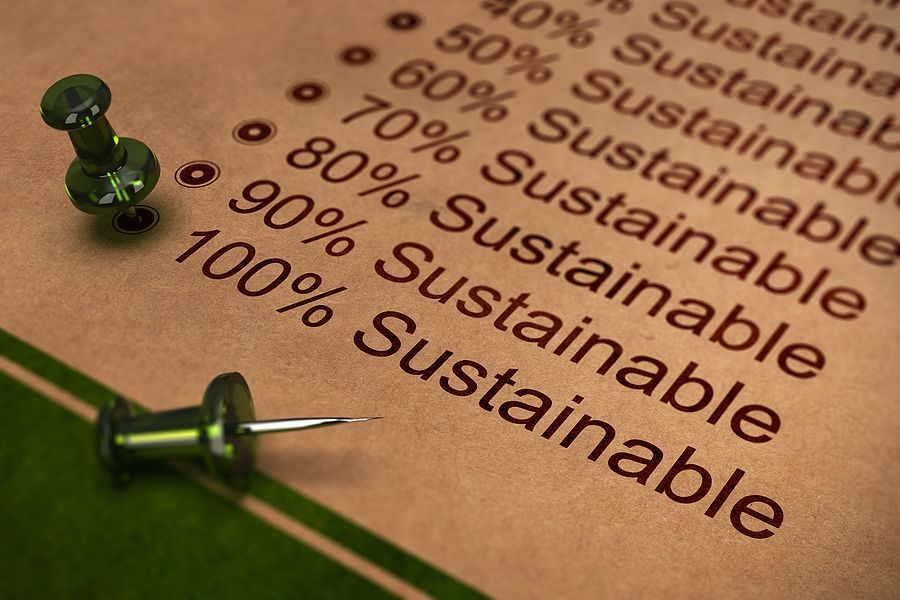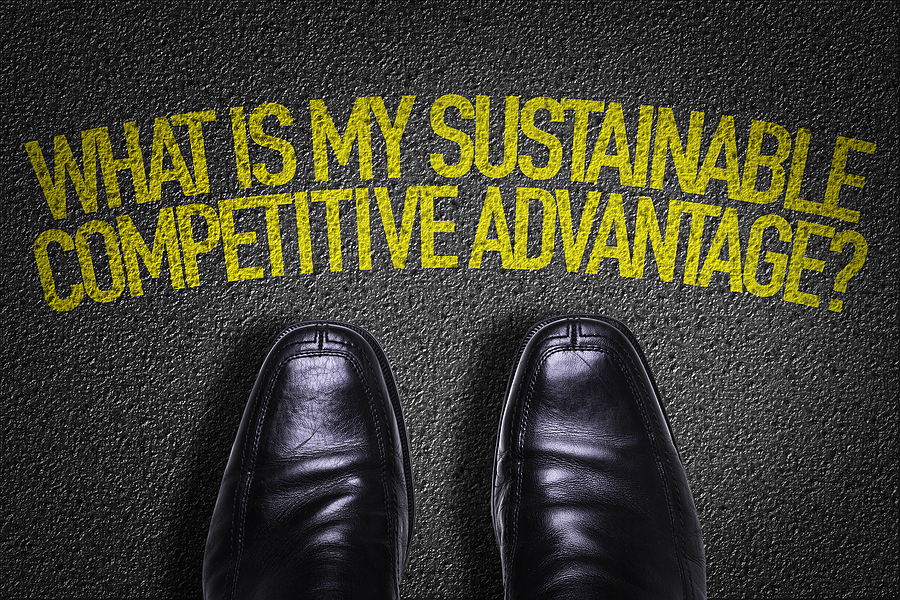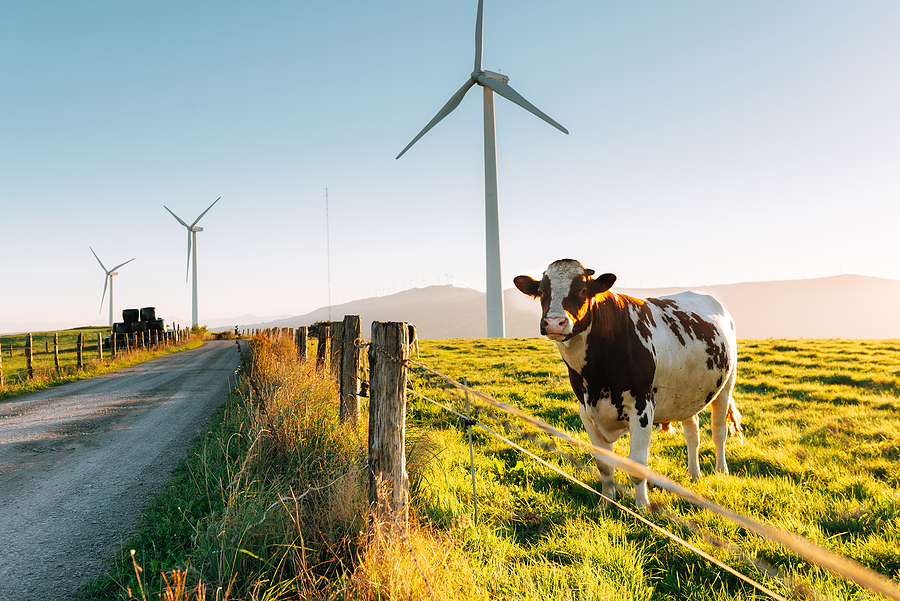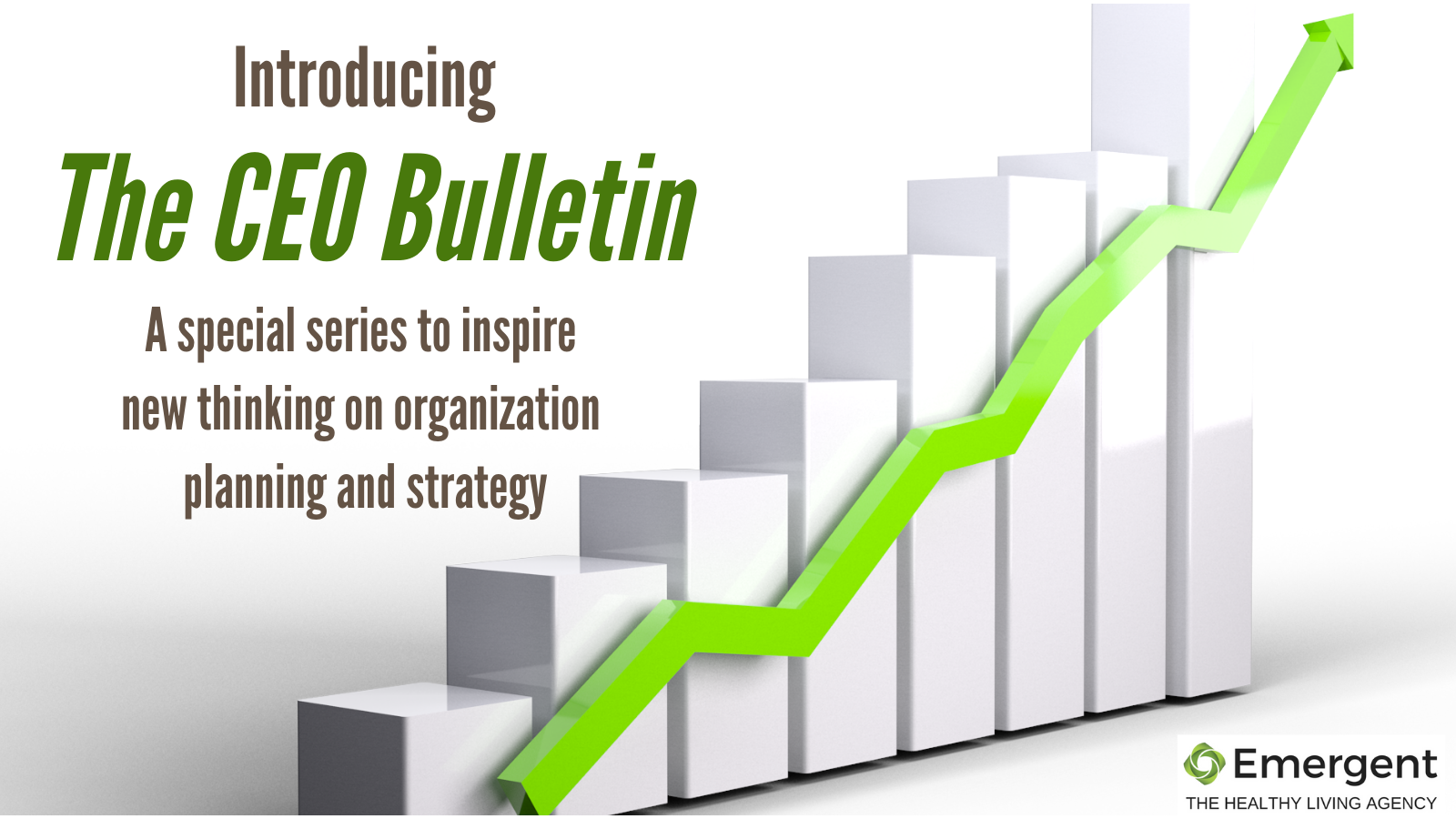
Sustainability Performance is Taking a Hard Turn
January 17th, 2024 Posted by Emergent Brand Activism, brand advocacy, brand marketing, brand messaging, brand strategy, Carbon footprint, Climate Change, Greenhouse Gas, Greenwashing, Sustainability 0 comments on “Sustainability Performance is Taking a Hard Turn”How’s your sustainability practices’ steering right now?
Last year was the warmest ever for our planet. We continue to pump more greenhouse gases into the atmosphere anyway. Consumer sustainability concerns are evolving and it’s about to take a hard turn. Are you ready to navigate? Stay with us while we peel the onion on how we got here and what’s coming.
In June of 2020 Emergent started working with a new food technology start-up called Air Protein, founded by MIT physicist Dr. Lisa Dyson. We came onboard to help install the strategic building blocks for a new category, brand and business. Dyson’s ground-breaking mission to create meat proteins that were identical in every way to the animal version without any animal involved in making them. Instead, she borrowed a chapter in protein creation research from NASA that launched during the Apollo Mission era – aimed at figuring out how to feed astronauts during extended space travel.
The basis for this ground-breaking work was emerging evidence responding to the detrimental impacts of livestock farming and industrial agriculture on our environment. We were in a word, awestruck, by the gravity of the environmental challenges and convinced that Dr. Dyson’s “carbon transformation” technology held great promise for a more sustainable way to create meat proteins that didn’t carry the eating experience challenges of plant-based options.
- The more study we did through our relationship with this important new company, the more persuaded we became that the entire food and beverage industry needed to step up on the journey to more sustainable practices. Admittedly, we were likely ahead of the curve at that time on the details that sit underneath why our food system (industrial agriculture) is a significant contributor to carbon emissions.
By late 2020 and we had amassed enough secondary research on the emerging issue of climate impact and sustainability to draw some conclusions. First, consumers were responding with some alarm to stories of global warming outcomes and rising greenhouse gas levels. Second, it was clear to us that food, beverage and retail brands were trying to figure out what this meant to the business and how they should navigate the issue.
Early in 2021 we responded by creating the Brand Sustainability Solution (BSS) platform designed to help frame the key challenges, compile what we knew about evolving consumer preferences and tie it all together with a five-point sustainability readiness best practices guide.
At the time our primary conclusions were:
- The food system is a significant contributor to greenhouse gases, primarily from raising livestock for protein.
- Consumers are trying to identify sustainable choices, but brands were behind the curve in responding.
- Businesses were unsure of the correct path to sustainability readiness. Even what readiness consisted of was hotly debated.
Today we stand at the edge of a significant change
Sustainability impacts to date have been defined within a framework of Systems 1, 2 and 3 impacts. System 1 and 2 are both within an organization’s own ability to manage and make changes whether that be energy use, resource consumption or packaging upgrades. However, studies have confirmed that 80 to 90 percent of companies’ carbon emission challenges are in System 3 – outside their direct control and in the hands of suppliers. In sum, the primary source of greenhouse gas emissions for food, beverage brands and retailers are in the supply chain. Said another way, how products are produced, the ingredients that go into them.
Now comes the tough part
Consumers are increasingly connecting the dots between sourcing, ingredients and emissions. As have regulators and other influential players including media. Here’s what the New York Times recently had to say: “Supply chain hurdles complicate food companies’ climate pledges – The bulk of emissions — in many cases more than 90 percent — come from the companies’ supply chains. In other words, the cows and wheat used to make burgers and cereal.”
- Witness the explosion of interest in regenerative farming practices as brands seek to mitigate the System 3 conditions. Goes without saying, we’ve reported time and again that scientific assessments are vital to this process for the simple reason you can’t know where you’re going until you know where you are to start with.
Now we enter the era of emissions reporting. Businesses will need to conduct credible System 3 assessments of current conditions, report on that data and also set realistic targets over time for mitigating GHG (greenhouse gas) contributions. The operative word here is reporting. People want to know what products constitute a more sustainable choice, and the conditions underneath the supply chain will be a determining factor in that understanding.
Our analysis over time of where companies are on the path
For 18 months we conducted questionnaire assessments with numerous CPGs and retailers on their sustainability journey. We learned:
- Science based System 3 assessments were lacking along with the mitigation goals that accompany them.
- A significant disconnect between sustainability investments and policies, and programs designed to convey that progress to all stakeholders, especially consumers.
- A pervasive presence of siloed conditions inside organizations where newly formed sustainability teams were working separately from marketing, where outreach and communications resources usually reside.
Far too many brands are still preoccupied with the low hanging fruit of say recyclable packaging when we know that the vast majority of emission issues are in the ingredient supply chain. It’s time to make science-based assessment of System 3 a core part of the sustainability management discourse, and to connect that analysis with reasonable steps to improve through partnerships and goal setting among suppliers, farms and other actors along the product creation path.
What consumers want
Truth, transparency and honesty from the brands they care about, backed up with credible, third-party verified data on current performance and a clear path forward for setting sustainability improvement goals.
The hard turn
Transparency and reporting of emissions status, visibility to science-based analysis and disclosure of current conditions followed by reasonable targets over time for advancements. Thus, a call for brands and businesses to collaborate with supply chain partners to create a virtuous ecosystem designed to bring all participants along on the path.
Importantly, communicating this work to all stakeholders, too.
Marketplace competitive leverage
Progressive brands get the urgency of this and the opportunity it presents. As consumers want to make more sustainable choices, this presents an opportunity for category leadership in sustainability best practices. And by doing so to gain lasting competitive marketplace advantage as a best practices leader.
The downside of pushing this off
As the call for clear emissions reporting and standards gains traction, brands will increasingly be held to account on their progress or lack thereof. Those who choose to wax on about progress in System 1 and 2 at the expense of dealing with the more complex and taxing conditions in the supply chain will risk being called out for half measures and greenwashing.
As consumers start to look for this information from brands and on product packaging, those operating without that data will become conspicuous regardless the reasons. This is an opportunity to seize the day and lead the category towards better practices and outcomes for people and the planet.
The future ahead
What’s notable now, however, is the absence of clear standards that help prevent a descent into the wild west where brands and businesses decide independently what constitutes an acceptable outcome. Third party recognized frames for different businesses are essential. It will come. Here’s the evolutionary changes we expect to see:
- Carbon emission labeling
- Development of recognized standards of performance
- Best practices in supply chain emissions management
Sustainability guidance for 2024
The most glaring error we’ve encountered on this journey is the absence of robust efforts to communicate. Too many brands labor on these issues behind the corporate curtain without a strategic, creative program in place to let consumers and other stakeholders know what you’re doing. Some may be fearful of getting called out for not going fast enough.
We think its time to worry more about helping people understand the great efforts you’re making to map a more sustainable future. In fact, we’d say you have already acquired a responsibility to do this early and often.
Should you decide your organization would benefit from guidance on better managing these changes and the communications tools needed to enhance your effectiveness in getting the word out, use the link below to ask questions and start an informal conversation. We’d love to help you sort out the right path, message and comms tools.
Looking for more food for thought? Subscribe to the Emerging Trends Report.
Bob Wheatley is the CEO of Chicago-based Emergent, The Healthy Living Agency. Traditional brand marketing often sidesteps more human qualities that can help consumers form an emotional bond. Yet brands yearn for authentic engagement, trust and a lasting relationship with their customers. Emergent helps brands erase ineffective self-promotion and replace it with clarity, honesty and deeper meaning in their customer relationships and communication. For more information, contact Bob@Emergent-Comm.com and follow on Twitter @BobWheatley.




